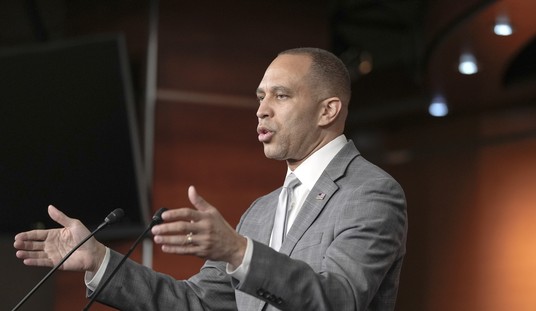WASHINGTON -- Lewis Carroll, call your office. Or, better still, the author of "Alice's Adventures in Wonderland" should call Washington, where the government's determination to solve the housing "crisis" produced this lead paragraph in a recent New York Times story: "Federal agencies are intensifying a criminal investigation of the mortgage industry and focusing on whether some lenders turned a blind eye to inflated income figures provided by borrowers."
Perhaps some lenders who were lied to were culpably indifferent to dishonesty because they planned to sell to others mortgages that the lenders knew were risky. But the victimization narrative that is turning turbulence in the housing market into a morality tale involves borrowers victimized by "predatory" lenders. The narrative remains murky because there is scant information about the percentage of currently distressed borrowers who were untruthful about their incomes or net worth when talking to lenders.
One symptom of the "crisis" is that housing prices have fallen. How far is unclear. Estimates range from 3 percent to 13 percent. Questions arise.
Do young couples struggling to purchase their first homes concur with the sudden consensus that the decline in prices is a national misfortune? The Economist reports: "Monthly payments on a typical house with a 30-year mortgage and 20 percent downpayment were 18.5 percent of the median family's income in February, down from almost 26 percent at the peak -- and close to the historical average." By this measure of housing affordability, the "crisis" is welcome.
The housing perhaps-not-altogether-a-crisis resembles, in one particular, the curious consensus about the global warming "crisis," concerning which, the assumption is: Although Earth's temperature has risen and fallen through many millennia, the temperature was exactly right when, in the 1960s, Al Gore became interested in the subject. Are we to assume that last year, when housing prices were, say, 10 percent higher than they are now, they were exactly right? If so, why is that so? Because the market had set those prices, therefore they were where they belonged? But if the market was the proper arbiter of value then, why is it not the proper arbiter now? Whatever happened to the belief, way back in 2007, that there was a housing "bubble"? Or to the more ancient consensus that, because of, among other things, the deductibility of mortgage interest payments from taxable income, too much American capital flows into the housing stock?
Recommended
Homeownership is, up to a point, a barometer of social health: Ownership deepens an individual's sense of having a stake in the health of the neighborhood and the larger community. Today, 67.8 percent of households own their homes, up from 65.9 percent 10 years ago and 63.7 percent 15 years ago. There are, however, limits to how high the rate can rise: Not everyone wants or can afford to own. And there are prudential limits to how high government should drive ownership by, for example, pressuring lenders to satisfy borrowers who have questionable qualifications.
As housing legislation perhaps heads for a rendezvous with the president's veto pen, remember that the object of the policymaking exercise is not justice -- or compassion, which is not the same thing -- for this or that category of lenders or borrowers. Rather, the main point of the exercise is to mitigate bad consequences for two categories of innocent bystanders.
One category consists of those who live in proximity to foreclosed homes. Unoccupied houses become subject to decay and vandalism, thereby letting loose the infectious disease of blight that depresses the values of properties in concentric circles.
The other category consists of everybody. Seventy percent of economic activity is personal consumption, which recently has been fueled by the "wealth effect" -- people spending because they feel wealthier due to the appreciation of their largest asset, their house. So "stabilizing" -- i.e., putting an artificial floor under -- housing prices may be necessary to fuel consumption by a public that in the 1980s saved almost 10 cents of every dollar it earned, and in the 1990s saved a nickel, but recently has had a negative savings rate. This will, however, injure some innocent people, such as those young couples waiting to become homeowners. And it will benefit others who have earned an injury, such as speculators and others who bet that the prices of houses would never decline.
Everyone knows that there is only one commodity the price of which always rises -- major league pitchers. Concerning the market for them, Congress should do something.























Join the conversation as a VIP Member